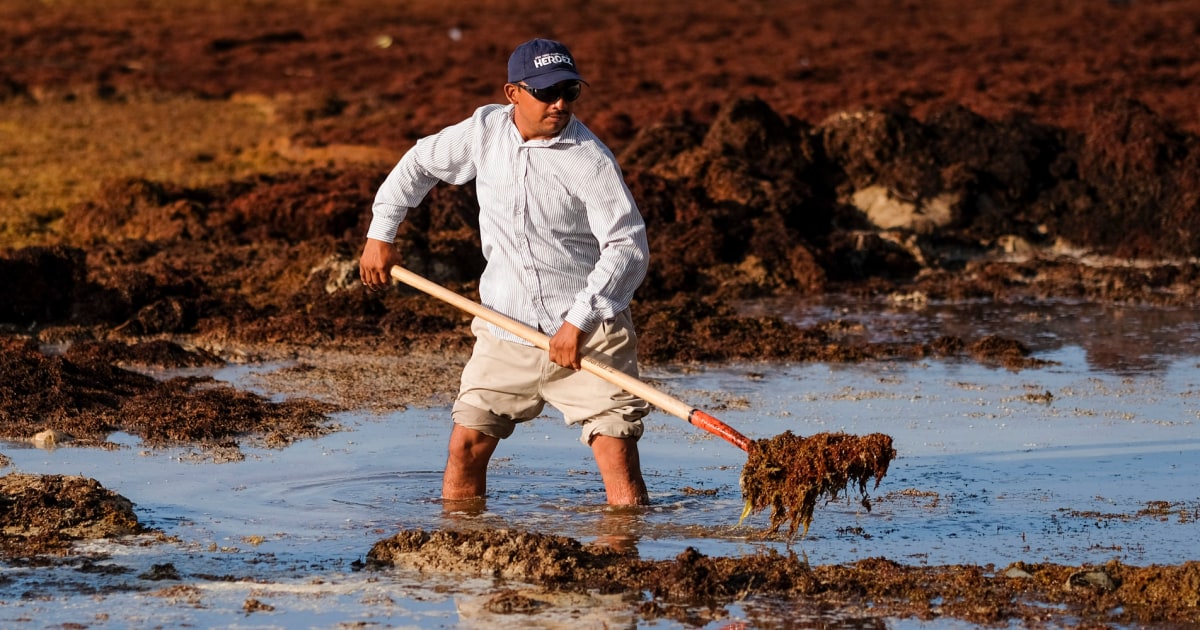
A raft of brown-colored seaweed in the Atlantic Ocean is so vast it can be seen from space.
Spanning roughly 5,000 miles — about twice the width of the United States — the thick blanket of sargassum floats between the Gulf of Mexico and the shores of West Africa.
In open water, these giant mats of algae are mostly harmless and even have some benefits, including serving as a habitat for certain fish and crustaceans and absorbing carbon dioxide. But ocean currents are pushing sargassum west, causing hundreds of tons of seaweed to wash up on beaches across the Caribbean and Gulf of Mexico.
There, it can choke corals, wreak havoc on coastal ecosystems and diminish water and air quality as it rots.
Scientists say this bloom is one of the largest on record, stoking fears that seaweed invasions of beaches in the coming weeks and months could be particularly severe.
“It’s incredible,” said Brian LaPointe, a research professor at Florida Atlantic University’s Harbor Branch Oceanographic Institute. “What we’re seeing in the satellite imagery does not bode well for a clean beach year.”
Sargassum’s growth varies from season to season. LaPointe, who has studied it for four decades, said huge piles typically come ashore in South Florida in May, but beaches in Key West are already being inundated with algae. Parts of Mexico’s Yucatán Peninsula, including Cancun, Playa del Carmen and Tulum, are preparing for up to 3 feet of sargassum buildup in the coming days.
Giant mounds of sargassum are more than a nuisance and an eyesore, said Brian Barnes, an assistant research professor at the University of South Florida’s College of Marine Science.
“Even if it’s just out in coastal waters, it can block intake valves for things like power plants or desalination plants, marinas can get completely inundated and boats can’t navigate through,” he said. “It can really threaten critical infrastructure.”
Last summer, the U.S. Virgin Islands declared a state of emergency after unusually high quantities of sargassum caused water shortages on St. Croix.
Other impacts to human health are coming into focus. As the seaweed rots, it releases hydrogen sulfide, which can cause respiratory problems for tourists and residents in the vicinity, LaPointe said.
“Following the big 2018 blooms, doctors in Martinique and Guadeloupe reported thousands of people going to clinics with breathing complications from the air that was coming off these rotting piles of sargassum,” he said.
Then there are the economic concerns. Sargassum invasions can stifle tourism, and removing hundreds of tons of algae from beaches is costly.
Source: | This article originally belongs to Nbcnews.com









